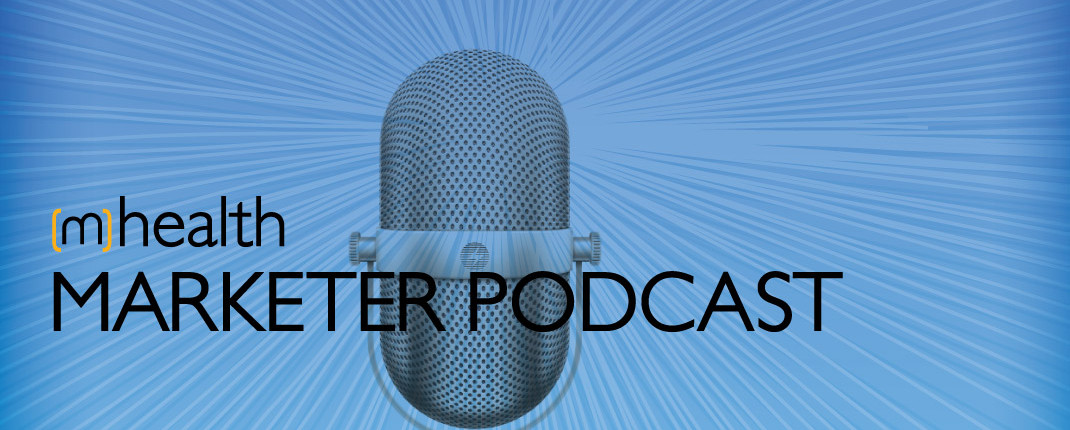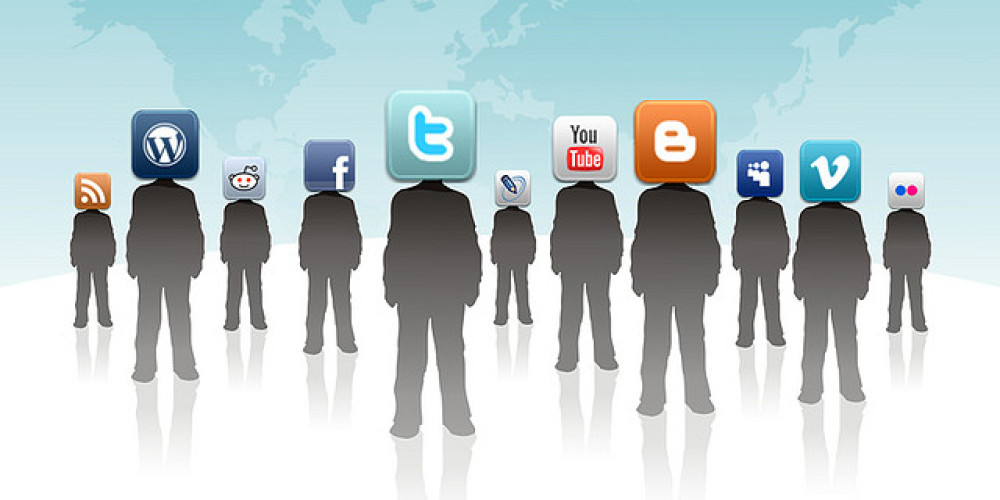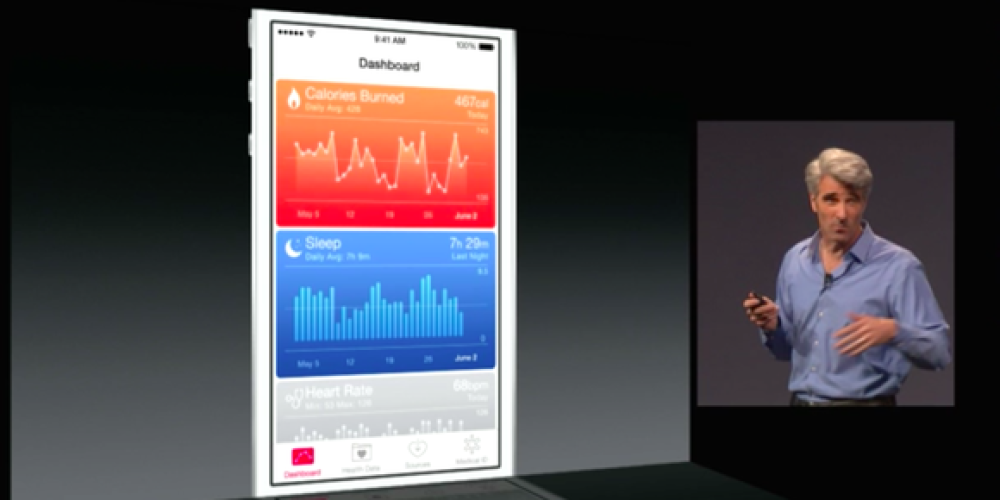Right now, we’re hearing all sorts of buzzwords about communication and information technology in healthcare.
Jonah J. Czerwinski, senior advisor to the Secretary of the U.S. Department of Veterans Affairs, is cited in a recent mHealth News article:
“It’s connected healthcare – no ‘tele-,’ no ‘m-,'” he told an audience of roughly 100 healthcare experts. “This is just healthcare.”
Yep, amid all the hype and buzzwords floating around, it boils down to health care. Today, let’s talk about how technology can indeed improve healthcare… and why a startup, lean, agile approach that incorporates marketing is the answer.
About This Show:
Each Wednesday, Sam Stern, founder and Chief Marketing Technologist at Modallic, an mHealth marketing and brand development firm reveals his winning Mobile, Digital and healthcare IT marketing strategies, shares real life Mobile Health marketing success stories, and offers breakthrough marketing tips and tactics so you can lead the field with your Mobile Health and healthcare IT solutions.
Discover how to craft compelling stories to open doors with key health care system decision makers. Understand how an agile marketing mindset and approach positions you to create a profitable, sustainable business.
Gain insights into Mobile Health and healthcare IT marketing strategy, how to tell your unique mHealth and healthcare IT marketing story, creating your mHealth buyer personas, how to integrate an agile marketing process, mobile health and digital health brand development and market positioning, and learn what really works in attracting and landing mobile health and healthcare IT clients.
Show Notes:
mHealth: Obsolete Already?
The first iPhone hit the streets back in 2008, yet five short years later, Mobile Health is suddenly obsolete? Perhaps the role of mobile and digital technology is simply misunderstood.
After reading through the few responses about the Is mHealth becoming obsolete article on the HIMSS Linkedin Group, here are a few things that seem to be missing from innovation in healthcare Information Technology and improving communications in healthcare.
1. All players must adopt a Startup Mentality. In The Lean Startup, Eric Ries defines a startup as:
“A startup is a human institution designed to create a new product or service under conditions of extreme uncertainty.”
Given the extreme uncertainty within the healthcare industry and the application of IT within healthcare, all the vendors of healthcare IT solutions, regardless of size or time in the IT game qualify as startups. Perhaps even some of the healthcare systems themselves qualify too?
Established vendors who rest their case on legacy IT systems without including mobile functionality that front line medical clinicians want and use actually add to the complexity and uncertainty. As a few have noted in the Linkedin comments, mobile and telehealth technology are simply new tools to ultimately help in delivering more effective and efficient healthcare.
2. Real tests with real customers- Carol Hudson, R.N. shared this insight on the Linkedin discussion:
” It was the vendors who were not ready to service such a large and demanding group of consumers. Additionally, vendors used IT people to develop the product with minimal to no input from the end users themselves. To me, that is the rub.
I know of companies who used non-clinicians to build medical records and workflows. These same people today still do not see the value in clinicians e.g. licensed professionals.”
I fully agree with Carol. This is the rub. The large IT vendors have a vested interest in protecting their legacy systems. Many healthcare organizations have multiple IT and database systems in operation.
It all starts and ends with the front line customers- the clinicians, doctors and nurses. Adoption of mobile technology in healthcare must take a bottom-up approach, rather than a battle of minds and egos between vendor IT and healthcare system IT professionals.
3. The product tests with real customers reveal key marketing messages- Healthcare IT firms practicing a lean Build-Test-Learn approach to getting product development right will also discover the marketing messages that have potential to resonate with both internal users to speed adoption within a client’s healthcare organization, and to attract additional clients. The language the customers use in describing the problems they face daily in using data and communication to deliver healthcare is the common language to use in marketing messages. The stories that emerge from the product tests become marketing stories to spread the hope of the solution to the challenge.
4. Product development and marketing message development happen simultaneously- In the lean approach, the marketing is built into the product. The traditional business plan and marketing research using tools such as focus groups and surveys is replaced with ongoing Build-Test-Learn cycles.
5. Testing Proves the Business Vision and Strategy- In The Lean Startup, Ries, states that a big mistake many businesses make is assuming they know best what customers want. They skip straight to straight number four in answering the following questions:
1. Do customers recognize that they have the problem you are trying to solve?
2. If there is a solution, would they buy it”
3. Would they buy it from you?
4. Can you build a solution for that problem?
Only testing product development with customers can truly answer the first question. The product tests also confirms if your business vision and strategy are either brilliant or simply a pipe dream. Your Business Vision- for example, build a billion dollar revenue business in healthcare IT products and services- does not change from the tests, however, you may need to pivot on your business strategy based upon what the tests reveal. For instance, you may learn through the product tests that more ongoing training and support is required. This impacts your product and services pricing strategy and staffing and operational needs.
Here’s the takeaway from this…
Get out of the office and from behind the computer. Talk to customers, even before you have a product. Keep your mind and ears open. Don’t assume anything. What the customer wants… and is willing to buy… drives your products and delivers your marketing message gold.
Stay tuned… over the next three weeks we’ll take a closer look at the value of customer testing and using the lean, agile approach to marketing.
Resources:
HIMSS LInkedin Discussion: Is mHealth becoming obsolete?
mHealth News Blog Post: Is mHealth becoming obsolete?
Will You Help Me Get This Message Out There?
Want to get more tips and strategies for marketing your digital health firm? There are three ways you can enjoy these tips and strategies, share them with friends, and help me grow this movement to end the lack of innovation in healthcare:
Sign up for this podcast on iTunes. Click here to subscribe to the podcast on iTunes.
Subscribe to this podcast through the Podcast app on your iPhone or Android phone (free from the app store).
Leave a review — Share an honest sentence or two about the show on the iTunes page and give it a star rating (this makes a HUGE difference in helping others find the show).
Share the Podcast — Share this episode with friends and colleagues. An easy way to do that is by using the social media buttons down below.
Finally, if you have a question you’d like answered on a future show — or if you have any feedback in general — please let me know: sstern@modallic.com
Thanks again for your support!









6 thoughts on “#009: mHealth, Digital Health, TeleHealth, Healthcare IT: What Is It?”